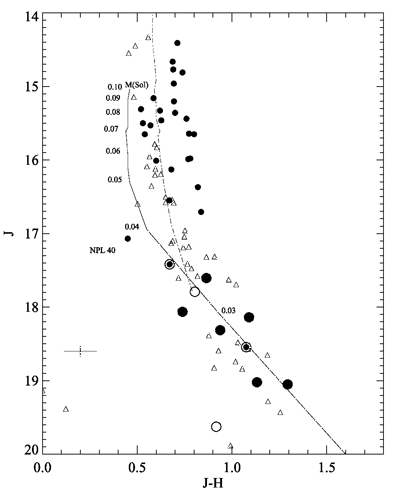WHT+LIRIS
A search for low-mass brown dwarfs in the Pleiades open cluster has led to the identification of the least massive cluster members: BRB 28 and 29 have masses of the order of 25 Jupiter masses,
and they were confirmed as cluster members from HKS photometry and proper motion measurements using the Long-slit Intermediate Resolution Infrared Spectrograph (LIRIS) on the William Herschel Telescope.
This discovery will help to constrain evolutionary
models for L-type brown dwarfs and to extend the study of the cluster mass function to lower masses. The existence of such low-massive brown dwarfs and its frequency in relation to
higher mass stars might indicate the presence of planetary-mass bodies floating freely in the Pleiades.
 |
Figure 1. J versus J-H colour-magnitude diagram for all Pleiades very low-mass star and brown dwarf candidates of the survey with lithium or proper motion consistent with membership (filled circles)
(extracted from Bihain et al., 2006, A&A, 458, 805). [ GIF ] .
|
References:
|

